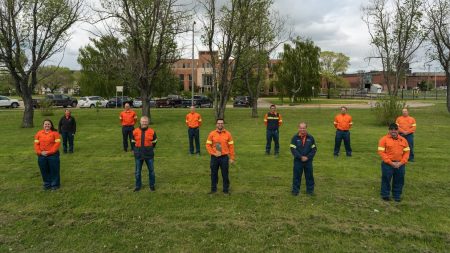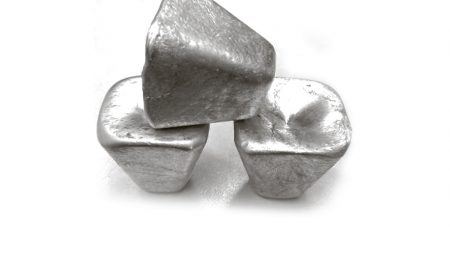Replicating the Dynamic Maintenance System

Pictured, in front row: Marie-Hélène Malenfant, François Beaudoin, Jonathan Fortin, Mario Bouchard and Jean-Philippe Minier. Back row: Marie-Ève Larouche, Pierre-André Dubé, Éric Tremblay, Jean-Philippe Jomphe, Jérôme Bouchard and Dany Bonneau.
Initially designed as a preventive maintenance tool for the Vaudreuil Works Calcination Centre, the Dynamic Maintenance System (DMS), winner of the CEO Award in the Liquidity category, is now being replicated at various Quebec Operations sites and garnering interest at other Rio Tinto sites.
To ensure that the tool was replicated effectively, the integrated productivity team launched a black belt project during its implementation at East Hydrate. The idea was to document the replication method to allow for rapid implementation at other sites. Beyond the technical aspect, the black belt project made it possible to determine the optimal conditions for the tool’s uptake by employees, including those from operations and maintenance.
“When transposing the DMS from one facility to another, we rely on employees’ knowledge,” explained Jonathan Fortin, Optimisation Technician at Vaudreuil Works. “Employees hold the key to success for much of the work involved. We couldn’t do it without them. With the black belt project, we were able to include them in the blitz process so that their knowledge could be transferred to the software.”
For the DMS team, the key proof of concept was reproducing the tool outside a chemical plant, where they had limited knowledge. To this end, they targeted Laterrière’s pot tending machines. “The employees were very enthusiastic about the technology, and that helped us a lot during the process,” added Dominic Jolin, Asset Management Consultant, Operational Excellence. “The uptake by the team is really the key to success because the process of creating indicators demands a lot of rigour.”
One of the advantages of the DMS is that once the way has been paved, replicating it elsewhere is virtually a cut-and-paste operation. For example, once Laterrière’s pot tending machines were programmed in the DMS, this process could be almost wholly replicated at another aluminium smelter, such as the Alma or AP60 aluminium smelters, which are more technologically advanced. Dominic Jolin added, “The DMS makes it possible to democratise 4.0 technology and put it in the hands of the operation. It adds enormous value because it precisely identifies when a facility’s equipment is reaching the end of its life, and it puts reliability in employees’ hands.”
Expectations surrounding successful replication were high after winning the CEO award; everyone needed to contribute. The team, led by black belt Marie-Ève Larouche and experts Erika Vallerand and Philippe Marcil, went through every step of the process to find the optimal “turnkey” replication method. . “After several months of work, we were very satisfied with the outcome,” said Jonathan Fortin.
If you are interested in testing this technology in your facility, blitz spots will open up in the coming months. You can contact Dominic Jolin for information on the implementation method. The team would also like to thank Frédéric Dallaire, Manager, Asset Management at Quebec Operations, and Robin Bouchard, Assistant Manager at Vaudreuil Works, for their support in carrying out this project.


